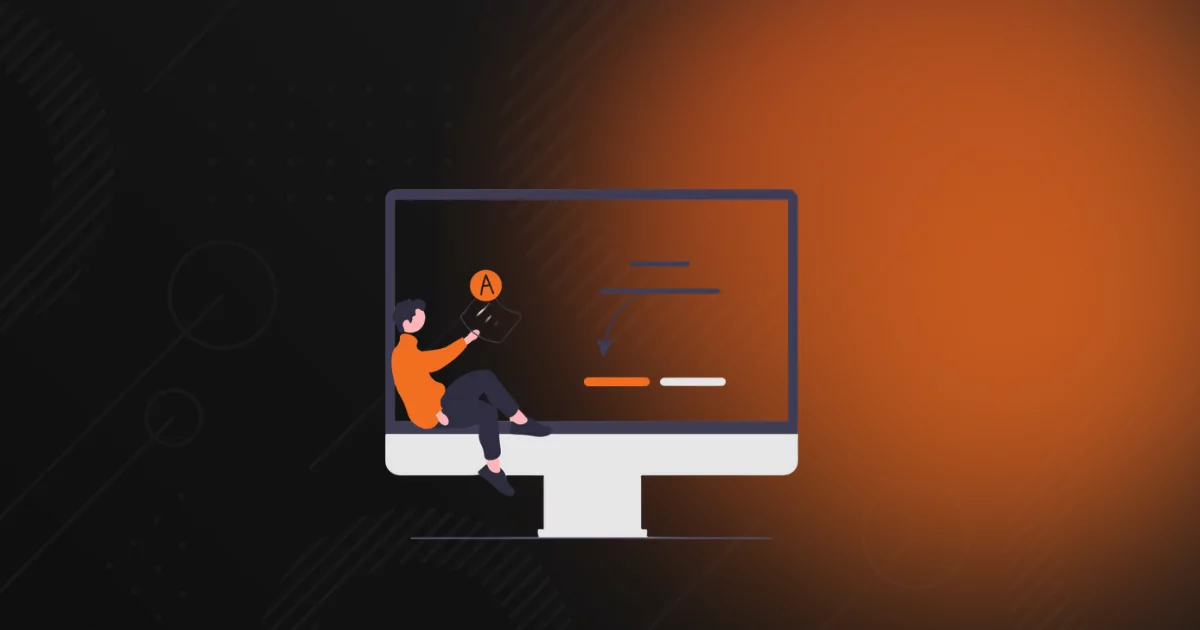
Make EVERYDAY World Backup Day with Backup Efficiency
World Backup Day, celebrated on March 31, is a global reminder of the critical importance of backup efficiency and data protection for cyber resilience. The World Backup Day pledge encourages individuals and businesses to commit to backing up their data – something MSPs must do daily for their clients. The pledge states, “I solemnly swear to back up my important documents and precious memories on March 31st.”
While this annual observance serves as a valuable reminder for clients about the importance of backups, for MSPs, every day should be World Backup Day. Implementing effective and efficient backup strategies is crucial to ensuring data security and business continuity throughout the year. This article examines how MSPs can incorporate backup efficiency into their business continuity and disaster recovery (BCDR) protocols, highlighting the significance of daily vigilance and modernization in data protection.
How Inefficient Backups Hurt MSPs
MSPs face numerous challenges in delivering reliable and efficient backup solutions, often leading to an imbalance between backup management efforts and added service value. Many of these challenges stem from outdated technology, human error, and backup complexity, which complicates and slows recovery and leads to longer downtime. The trickle-down effect of inefficient backups compromises an MSP’s budgeted overhead and labor costs, ability to meet SLAs, and, potentially, reputation in the market.
Not sure if your backups are efficient? Check out these hallmark signs of inefficiency to understand the broader impact on your BCDR services.
Legacy solutions
Many businesses continue to use legacy backup solutions, yet they lack the speed, automation, and security required to address today’s cyber threats and compliance needs. These outdated systems can also prove unreliable, complicating backup verification and heightening the risk of failed recoveries when disaster occurs. An ineffective or unreliable backup system can result in significant data loss, downtime, and compliance violations, all of which undermine client trust and disrupt business continuity.
Manual tasks
Requiring hands-on interventions in backup management creates inefficiencies and risks that MSPs cannot afford. Without automation, technicians are forced to manually initiate, verify, and monitor backups, resulting in a daily, repetitive, and time-consuming process that is susceptible to human error. When a backup fails or is misconfigured, recovery efforts may be delayed, putting businesses at risk of data loss, cyberattacks, and operational disruptions. Moreover, without automated reporting and monitoring, MSPs might not even notice an issue until it’s too late.
Backup complexity
Many traditional backup solutions require extensive configuration and maintenance, increasing the likelihood of errors and inconsistencies. When backup and disaster recovery (BDR) processes are overly complicated, MSPs struggle to provide rapid recovery times. This can severely impact a client’s business during an outage or cyberattack. If an MSP cannot restore data quickly, clients may experience prolonged downtime, financial losses, and reputational damage – all due to excessive steps in the process.
Less productive technicians
When technicians spend too much time manually managing backups, troubleshooting issues, and responding to failures, their overall productivity suffers. This not only leads to burnout but also diverts valuable technical resources from more strategic, revenue-generating initiatives. Frustrated technicians are less engaged, and in an industry where talent retention is essential, an ineffective backup process can contribute to high employee turnover rates.
High costs and increased risks
Complex, unreliable, and legacy backup processes increase operational expenses due to the extra labor and resources required to maintain them. Additionally, downtime and data loss caused by ineffective backup strategies can lead to contractual penalties, lost business opportunities, and potential legal consequences due to non-compliance with regulatory standards. Clients rely on their MSP to protect their data and keep their businesses running. When inefficiencies lead to failure, it erodes trust and drives clients to seek more capable providers.
3 Ways to Improve Backup Efficiency
For MSPs, achieving backup efficiency is not just about reducing workload – it’s about delivering reliable, cost-effective, and scalable data protection that keeps clients operational and secure. By modernizing backup strategies, MSPs can eliminate inefficiencies, reduce risks, and improve overall service quality. Here’s how…
#1: Replace manual madness with automation ease.
By automating backups, MSPs ensure consistent data protection without relying on manual intervention. Automated monitoring enables real-time detection of backup failures, guaranteeing that issues are identified and resolved before they escalate into critical problems. Moreover, automated reporting offers clear, up-to-date insights into backup health, providing MSPs and their clients with peace of mind that their data is protected and recoverable. The result? Reduced time spent on manual checks, fewer missed failures, and more dependable recoveries when they matter most.
#2: Go all-in-one to reduce complexity.
Many MSPs encounter challenges with backup complexity because they rely on various disparate tools for managing data protection, recovery, and security. An all-in-one BCDR solution simplifies management by integrating essential backup and recovery functions into a single, user-friendly platform. This shortens the learning curve for technicians, makes troubleshooting easier, and eliminates compatibility issues that arise from using multiple backup products. By streamlining complexity, MSPs improve operational efficiency, reduce costs, and enhance their ability to provide quick, reliable data protection for clients.
#3: Don’t be afraid to upgrade.
Outdated backup solutions struggle to keep up with modern cyber threats, business continuity needs, and evolving compliance regulations. MSPs that transition to next-generation BCDR solutions benefit from faster recovery times, enhanced security measures, and improved management efficiency. Features like instant virtualization, immutable backups, and ransomware protection empower businesses to recover swiftly and reduce costly downtime. A modern BCDR solution also provides the flexibility MSPs need to support businesses of all sizes, adapting to unique client requirements while ensuring cost efficiency. Upgrading is not merely about keeping pace with technology – it’s about future-proofing backup strategies to protect businesses against emerging threats.
>> Thinking of making a switch? Download The BCDR Buyer’s Guide to choose the best BCDR solution for your MSP.
Achieving Backup Efficiency with Axcient
Implementing those strategies can significantly improve an MSP’s backup efficiency, reduce operational overhead, and provide better service to clients. A more efficient backup approach translates to strong business continuity, enhanced client trust, and a more resilient MSP business model. Axcient offers all-in-one, comprehensive BCDR solutions with backup efficiency features so MSPs can easily follow best practices leveraging proprietary technologies. With x360Recover for BCDR and x360Cloud for Microsoft 365 and Google Workspace backup, MSPs gain backup flexibility and simplicity within a single platform.
Image-based, Chain-Free backup technology
Axcient’s patented Chain-Free backups streamline the backup process by eliminating the traditional dependency on previous backup snapshots. Unlike traditional backup methods that rely on a chain of incremental backups, Chain-Free technology creates independent, fully recoverable backup points. This approach reduces the risk of backup chain corruption, simplifies data management, and accelerates recovery times. MSPs can offer more reliable and efficient backup services, minimizing potential data loss and securing business continuity for clients.
AirGap anti-ransomware and data deletion protection
AirGap is a built-in, always-on feature within all Axcient BCDR products that adds an extra layer of data protection. It creates immutable data backups or snapshots of backup data and stores them in a secure, isolated archive shielded from modifications or deletions. By protecting backups from ransomware attacks and accidental deletions, AirGap guarantees data integrity and availability. This feature serves as a crucial last line of defense, allowing MSPs to recover clients’ data swiftly and securely in the event of a cyber incident.
AutoVerify automated backup integrity testing
AutoVerify, a built-in, always-on feature of Axcient BCDR solutions, automatically tests backups to verify their integrity and recoverability without manual intervention. This feature provides peace of mind by ensuring that backups are dependable and can be restored when necessary. Since AutoVerify operates in the cloud instead of on local appliances, MSPs benefit from the same verifiable recovery they expect from traditional backup solutions. It alleviates the administrative burden on MSPs, enabling them to focus on other essential tasks while maintaining high service quality for their clients.
Geo+ geo-redundant backups
x360Recover Geo+ is a feature that enhances data resilience by replicating backups across geographically dispersed data centers. It automatically replicates cloud backup data to multiple Axcient data centers in different geographic areas within the United States. This geo-redundancy ensures client data remains accessible and secure, even during regional disasters or data center outages. Implementing Geo+ helps MSPs comply with the 3-2-1 backup rule and fulfill redundancy requirements for cyber insurance and regulatory standards.
Backup insights and reporting
Axcient’s backup insights and reporting highlight potential failures or inconsistencies, ensuring that all protected data remains recoverable. With real-time visibility into backup health, MSPs can quickly identify and resolve issues before they impact recoverability. Instead of manually verifying each backup, MSPs can rely on automated reports to confirm backup success, thereby saving valuable time and reducing technical debt. These comprehensive reports also help MSPs demonstrate the reliability of their backup solutions to clients and auditors, ensuring compliance with industry regulations and cyber insurance requirements. By analyzing trends in backup performance and failure rates, MSPs can improve their BCDR strategies, optimize resource allocation, and gain better control over backup operations.
Optimize Your Backups for Backup Efficiency
While World Backup Day serves as an annual reminder, MSPs should dedicate every day to ensuring data security and business continuity. By adopting efficient backup strategies and leveraging advanced solutions like Axcient, MSPs can better protect client data and operational efficiency while reducing the risks associated with data loss. Remember, in data protection, every day is World Backup Day, and Axcient protects everything.
Author
Related posts
How well could you sleep with reliable cloud-based backups and recovery?
Take a deep dive into Axcient’s proprietary, automated security features to see how we’re ensuring uninterrupted business continuity — no matter what:




